- Administrator
- Albums and Singles
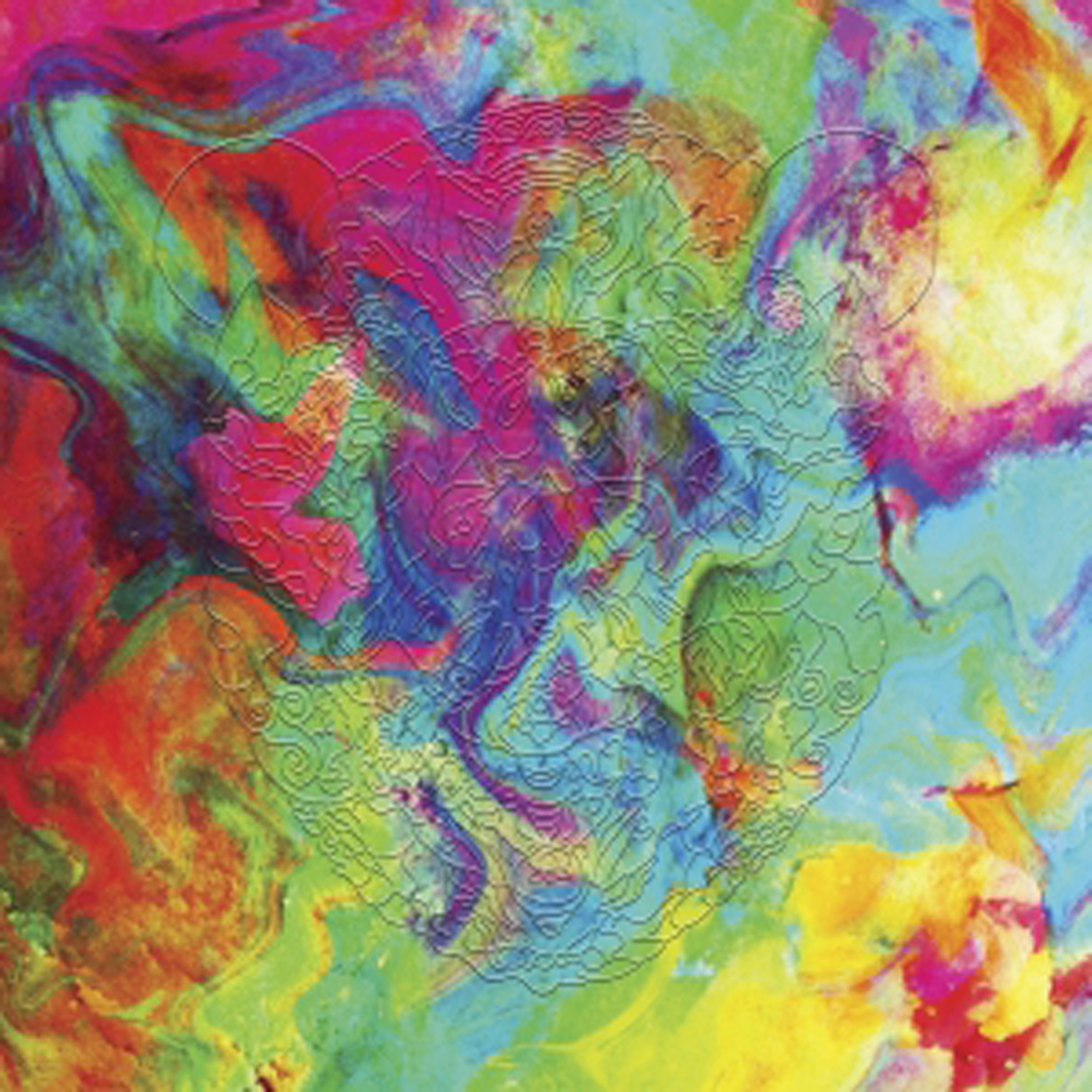 This very odd session was recorded live at Café Oto back in June 2013, pairing Palestine with Grumbling Fur's improv/drone guise for a night of truly bizarre and uncharacteristic fare.  Aside from some occasional vocals, much of the throbbing rustic psychedelia of the excellent first half sounds almost nothing like Charlemagne’s previous work (parts of it even resemble an Acid Mothers Temple-style freak-out).  Then, of course, there is the second half, which sometimes sounds like Steve Reich out of his mind on amphetamines, bashing away at a piano in the middle of a Japanese orgy that disturbingly also includes several sheep and some singing toys.
This very odd session was recorded live at Café Oto back in June 2013, pairing Palestine with Grumbling Fur's improv/drone guise for a night of truly bizarre and uncharacteristic fare.  Aside from some occasional vocals, much of the throbbing rustic psychedelia of the excellent first half sounds almost nothing like Charlemagne’s previous work (parts of it even resemble an Acid Mothers Temple-style freak-out).  Then, of course, there is the second half, which sometimes sounds like Steve Reich out of his mind on amphetamines, bashing away at a piano in the middle of a Japanese orgy that disturbingly also includes several sheep and some singing toys.
Title aside, the unhinged lunacy of Ggrrreeebbbaaammmnnnuuuccckkkaaallloooww!!! actually takes some time to start manifesting itself, as the first half begins in fairly recognizable "Charlemagne Palestine" fashion:  he chant-sings an unusual and nasal melody over a mildly dissonant bed of harmonium and crystalware drones.  In fact, the only real indication that something unusual is afoot is that there is also a chopped-up and pulsing loop undulating around him.  At about the halfway point, however, Palestine's vocals disappear and the piece dissolves into a surreal miasma of recordings of sheep and menacingly dissonance string drones before itself giving way to something that sounds like a fantasia on a Romanian violin melody.  Notably, any sense of structure or purpose is largely gone by this point, but not in a bad way: the song just becomes some weird psychedelic soup of shifting vocals, farm sounds, electronics, tensely sawing strings, toy robots, maniacal vocal howls, and roiling lower-register piano.  Happily, it stays that way until the very end, resulting in quite a pleasantly bizarre piece of music that resembles a deranged mash-up of Acid Mothers Temple, My Cat Is An Alien, and Phurpa.  Any piece that I can say that about is definitely not a boring one.
The second half of the record consists of yet another side-long piece, albeit one in a somewhat different vein.  Thankfully, however, it kicks off with some lingering sheep noises, so the transition was not terribly jarring for me.  In fact, the second piece may even be a continuation of the first piece, but it fades in at a different place than the first half ends, precluding any possible continuity and mysteriously hinting at a portion of the performance that did not make the album.  In any case, the second piece simmers along for awhile as a surreal stew of barnyard noises and wordless vocal drones, but then all the sex noises start up and Palestine churns up a appropriately clangorous racket on his lower keys.  It only escalates from there and it becomes impossible to tell who is doing what anymore, as the piece builds into a cacophony of clattering drums, wildly ascending piano intensity, and plenty of very vocal Japanese women having orgasms.  To their credit, Palestine and Grumbling Fur suddenly revert back to quiet, blearily dissonant droning before it all becomes too overwhelming (arguably, anyway).  The trio has one last perverse surprise up their sleeves though, as the final (post-orgy) moments of the piece are devoted to a rousing crowd sing-along led by Charlemagne's singing toys (Mattel Sing-A-Ma-Jigs, to be specific, in case anyone out there is looking to faithfully cover Ggrrreeebbbaaammmnnnuuuccckkkaaallloooww!!! in its entirety).
I can certainly see why Important wanted to put this out, as it documents a truly bizarre and one-of-a-kind performance.  I certainly wish I had been there.  That said, only the throbbing and hallucinatory middle section of the first half stood out as particularly unique and wonderful for me.  The rest of the album is either too improvised-sounding, too heavy-handed (the orgy), or simply better developed and executed elsewhere on Palestine’s solo Ssingggg album to make a big impact (the farmyard sounds and the singing toys).  In essence, Ggrrreeebbbaaammmnnnuuuccckkkaaallloooww!!! mostly just seems like Charlemagne working through some of his ideas for his next studio album with a couple of talented accompanists gamely trying to keep up with his completely out-sized personality.  I would be very curious to hear what Alexander Tucker and Daniel O’Sullivan could do with a more formal, studio-based collaboration.  Still, this is quite likable for what it is (I normally hate live albums and I do not hate this).  Ultimately, this album is probably just for Palestine completists, but I bet they will probably enjoy it quite a bit.
Samples:
 
 
Read More
- Administrator
- Albums and Singles
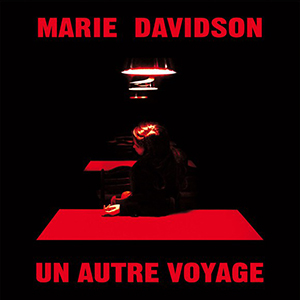 Since beginning her solo career in 2012, Un Autre Voyage (Another Journey) is Marie Davidson's third album, and even at this relatively young stage in her career shows marked development. Presented as a largely spoken word work (in French) of her personal experiences, there is a greater variety of emotions than the more depressive sounds of her earlier works, which comes through even absent the lyrics.
Since beginning her solo career in 2012, Un Autre Voyage (Another Journey) is Marie Davidson's third album, and even at this relatively young stage in her career shows marked development. Presented as a largely spoken word work (in French) of her personal experiences, there is a greater variety of emotions than the more depressive sounds of her earlier works, which comes through even absent the lyrics.
Davidson's extensive use of drum machines and vintage synthesizers surely earns a place in some sub-sub -wave genre that may or may not have been invented as of yet, but this is one of those cases where that approach comes together quite well.With its simple, throbbing rhythm and French spoken word vocals, "Boulevard Taschereau" made me feel a bit of commonality with Suicide's Why Be Blue or A Way of Life, with its similar sense of repetition mixed with a similar level of instrumental technology.
"Excès de Vitesse" sits more in a standard "new wave" template, with its metallic echo laden drum programming and basic, but effective synth sequences defining most of the song.At times it does sound a bit TOO rooted in its 1980s nostalgia, but the catchy bass pattern makes it memorable.The high point for me is "Balade aux USA," in which all of these elements come together brilliantly.Solid drum machine beats, twinkling synth leads, guitar (courtesy of Davidson's partner and bandmate in Essaie Pas, Pierre Guerineau), and singing, rather than spoken word, results in a strong, memorable bit of off kilter pop.
The other half of this album’s six songs has Davidson in a less pop and more introspective mood.There is a distinct heaviness around "Kidnap You in the Desert," led by a pulsing murky opening and fragments of voice rather than traditional vocals."Insomnie" also drops the drums and results in a lighter overall mood and effective, but simple melody compared to some of the thicker, more overbearing elements of the record.
Both the pop and abstract sensibilities dovetail together in the concluding "Perséphone."Starting from a foreboding introduction and heavy kick drum, Davidson adds in a simple but perfect bass synth pattern.Both Guerineau and Davidson provide spoken word vocals, and the addition of an organ passage pushes it into very melodramatic territory.
While at times Un Autre Voyage sounds a bit too attached to its 1980s trappings, it more often than not works extremely well with that distinct sound.I personally prefer sung to spoken word vocals, so the moments where they appeared here were the ones I felt most engaging.Even with the spoken word pieces, however, the music Davidson created was more than enough to make them still click well with me.
samples:
 
Read More
- Administrator
- Albums and Singles
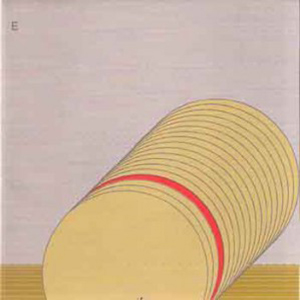 Down to the final three releases in Die Stadt and Auf Abwegen’s expansive reissue program, E is a collaborative album originally issued on the Dom label in 1988. Having moved past his synth heavy industrial din but before fully embracing avant garde experimental sounds, it is a transitional record that hints at late 1980s digital synth pop, as well as pure dissonance. At times it may seem a bit too dated by the technology used, but as a whole the album is another strong entry in Tietchens' catalog.
Down to the final three releases in Die Stadt and Auf Abwegen’s expansive reissue program, E is a collaborative album originally issued on the Dom label in 1988. Having moved past his synth heavy industrial din but before fully embracing avant garde experimental sounds, it is a transitional record that hints at late 1980s digital synth pop, as well as pure dissonance. At times it may seem a bit too dated by the technology used, but as a whole the album is another strong entry in Tietchens' catalog.
Tietchens and Bekker (who appeared on most of Tietchens' releases, but not credited as an equal partner) not only have a transitional sound on E, but it also features liberal application of Tietchens' more playful and absurd side.The album's high point in my opinion, "Musik Im Deutschen Imbiss," begins with plucked strings and percussive sounds that reek of late 1980s digital synth technology.Where it excels is that it begins sounding like a TV sitcom opening theme, transitions into a passage of simulated gunfire and screams, and then back again.It is an odd, and slightly disturbing juxtaposition.
"Patterns" is another piece where the sound is a bit more surreal and in this case playful.The opening wood block percussion is oddly non-electronic in sound, but has the complexity of something programmed, rather than played.After about the halfway point, a jaunty bit of organ is added to the mix, resulting in an strange paring of sounds and more than just a bit of silliness.
At times, however, it is difficult to tell what is supposed to be absurdism and what is just the side effect of heavily dated technology.The canned string sounds of "Kinematograph" and stiff piano hint at a dramatic sense of tension, but those basic sounds just never quite get it there.The heavy use of digital synth horns and sounds on "Zu Traurigem Behuf" are intended to convey sadness I would assume, but the canned nature of the sounds feel cliché and insincere.
Of course Tietchens and Bekker push the experimental envelope as well, and in some unexpected ways."Studie für Bassklarinette und Zuspielband" has some uncharacteristic squawking jazz moments via the clarinet, but it is also played in ways that more appropriately sound like shrill sirens and droning fog horns.Compared to much of his work it is rather organic, with the only overt electronics being the subtle, manipulated backing tape."Sphinkter" is a short bit of skittering noises and strange filtering that has the chiptunes sound, but predates that movement by a few decades.
Like most of these reissues, there is some additional previously unreleased material included.Of these two songs, "You Get What You Hear" is a short piece of weird spoken voices, clattering noises and heavily rumbling bass.It harkens back to Tietchens' work for the Discos Geometricos label, but even a bit more bizarre."Abendliche Stimmen" is more unsettling, resembling heavily processed and treated bits of chorus vocals bent and pulled into something completely sinister.They may be recorded during the same era, but both pieces have a distinctly different character to them that would have been out of place on the album proper.
The very obvious moments of General MIDI level sounds that appear on some of the pieces throughout E may have had an unintended effect on me, as I felt that, 25+ years later, the sound was more silly and quaint rather than daring.But even with that excluded, the remaining, more experimental pieces stand up with any of Tietchens' best work.While I have always favored his more industrial sounds and thus I found myself enjoying those pieces the most on here, the whole disc is a great one.
samples:
 
Read More
- Administrator
- Albums and Singles
 I am a fairly passionate Charlemagne Palestine fan, but it must be noted that my love is a very complicated and highly conditional one. I tend to enjoy his music in spite of his eccentricities rather than because of them (they can be quite grating at times).  Consequently, I went into this album with no small amount of trepidation, as there were three red flags right off the bat: 1.) a ridiculous title, 2.) something resembling the word "sing," and 3.) a record label that I was completely unfamiliar with in Idiosyncratics.  Also, the nasal a cappella opening seemed to instantly confirm those misgivings.  Consequently, I was absolutely knocked sideways when Ssingggg then unexpectedly blossomed into an apocalyptic monster of a crescendo.  At the risk of sounding crazy, I believe this easily rivals all of Palestine's previous career highlights.  Also, as far as I am concerned, this is a strong (albeit dangerously early) Album of the Year contender.  I am confident that history will vindicate me.
I am a fairly passionate Charlemagne Palestine fan, but it must be noted that my love is a very complicated and highly conditional one. I tend to enjoy his music in spite of his eccentricities rather than because of them (they can be quite grating at times).  Consequently, I went into this album with no small amount of trepidation, as there were three red flags right off the bat: 1.) a ridiculous title, 2.) something resembling the word "sing," and 3.) a record label that I was completely unfamiliar with in Idiosyncratics.  Also, the nasal a cappella opening seemed to instantly confirm those misgivings.  Consequently, I was absolutely knocked sideways when Ssingggg then unexpectedly blossomed into an apocalyptic monster of a crescendo.  At the risk of sounding crazy, I believe this easily rivals all of Palestine's previous career highlights.  Also, as far as I am concerned, this is a strong (albeit dangerously early) Album of the Year contender.  I am confident that history will vindicate me.
There truly has never been anyone else quite like Charlemagne Palestine and there presumably never will be, as I consistently find myself unable to comprehend his various artistic decisions or guess where any of his pieces are ultimately headed.  Each new album is a fresh surprise.  Ssingggg is a prime example of that singularly unpredictable, enigmatic, and somewhat self-sabotaging nature, as it opens with little more than the hum from a rubbed glass and some high-pitched quasi-ritualistic drone-singing.  Gradually, a massive, buzzing, and complexly dissonant organ chord swells into the picture, forming the perfect backdrop for Palestine's ominous and maniacal anti-mass…until his wordless chants begin to cohere into the word "sing" and–later–the phrase "I love to sing," thus dissipating the mysterious, haunting spell and making me briefly grimace with exasperation.  It is almost like he suddenly thought "Oh dear, this is getting much too great, much too soon.  I need to do something conspicuously silly fast."  Of course, an alternate possibility is that Palestine was trying to make some sort of commentary on the shifting meaningfulness/meaninglessness of language.  Or that (more likely) he was just guilelessly, earnestly, and totally unselfconsciously absorbed in his music.  Regardless of the intent, it was a curiously wrong-footing and distracting move.
Of course, the flipside of Palestine's prickly oddity is his outsider brilliance, which deceptively manifests itself through the massing, swelling, and complexly harmonizing organ drone that continues to grow even as the melodic foreground takes its strange turns.  Essentially, Charlemagne is a master magician engaged in a prolonged bit of artful misdirection, distracting me with parlor tricks (and possibly a kazoo) while the skies darken unnoticed in preparation for the storm to end all storms.  That threatened storm finally hits around the 20-minute mark and can only be described as all hell breaking loose (in the best way possible).  While the organ continues to drone on, Palestine unleashes a truly epic tape onslaught, as martial drums, sheep, choirs, political rallies, squealing children, the entire population of a rainforest, and an actual massive thunderstorm all bleed together into a buzzing, crushing maelstrom that sounds like the entire history of the world condensed into one brilliantly hallucinatory, brain-melting cacophony.  Then, after about half an hour of sustained phantasmagoric perfection, it all suddenly vanishes into silence, leaving only the lonely hum of a wet finger circling around a glass.  That is where I would expect the piece to logically end, of course, but instead it blossoms into a surreal coda involving a singing toy performing a duet with Charlemagne, which concludes with both the toy and the artist saying "bye bye."  The resulting sensation is probably not unlike staggering out of a war zone and suddenly finding oneself on the set of The Muppet Show.
Experienced on headphones, Ssingggg is a legitimately visceral, harrowing, maximalist, and synapse-frying experience; the sort of thing that qualifies more as a life event than entertainment.  I truly cannot say enough great things about how wild, ambitious, bewildering, and masterfully executed this album is. Ssingggg is Charlemagne Palestine's "mic drop" moment: this vein is done; there is no reason for him or anyone else to ever attempt something like this ever again, as it is unquestionably the last word in whatever the hell it is.  If life were a movie, Palestine would be on a boat somewhere right now, content that he has conclusively realized his destiny and never needs to make another album ever again.  Since it is not, however, I am sure he will resurface with something completely different in like a month (and I will presumably be surprised again).
 
Read More
- Administrator
- Albums and Singles
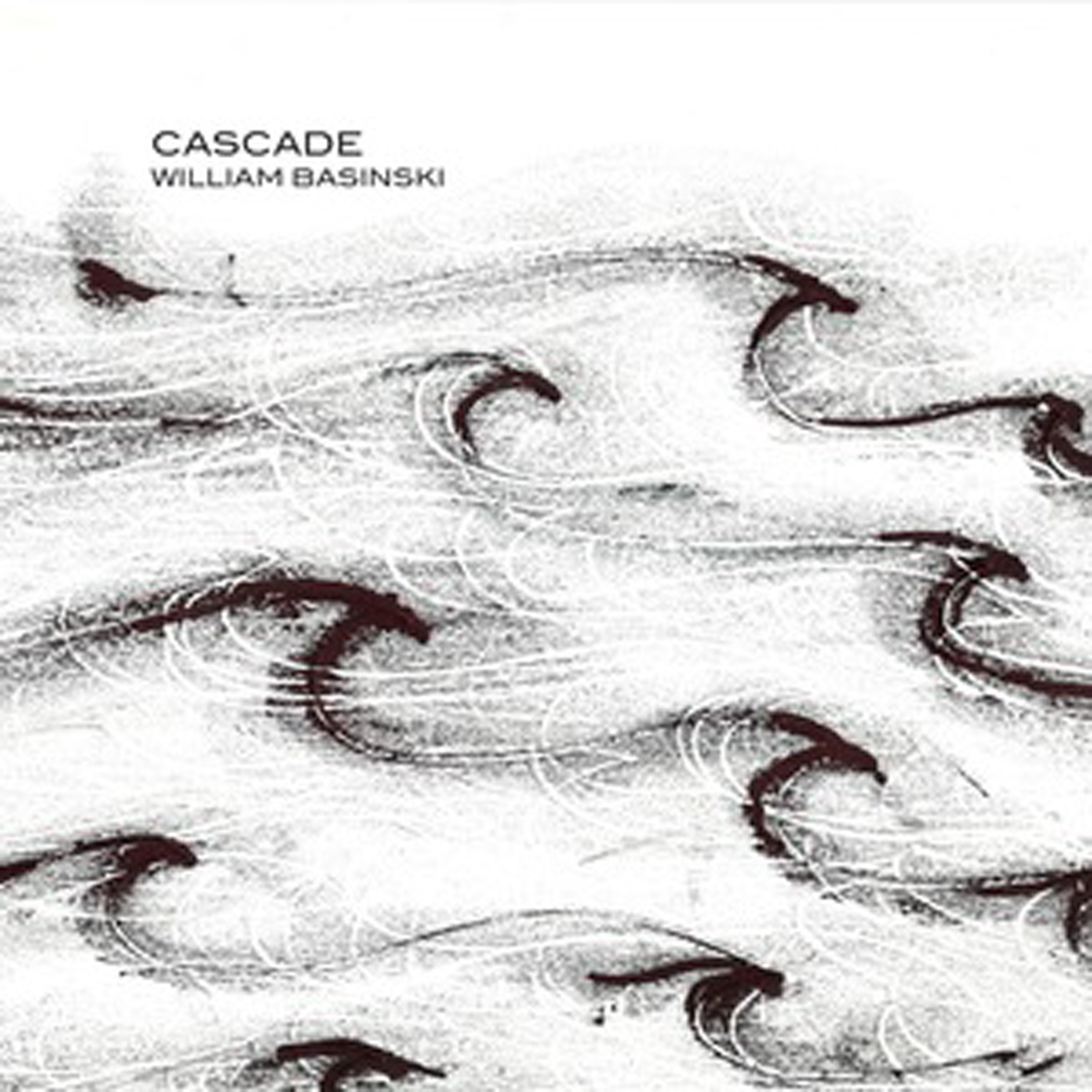 This is simultaneously a highly unusual and an extremely representative addition to William Basinski’s impressive discography: on one hand, it is yet another composition characteristically built upon a single brief and decaying tape loop, but it is also a comparatively unadulterated and "raw" prelude to the forthcoming Deluge album.  Both albums are built from the same tape snippet, but Deluge feeds its simple piano motif through a series of varying feedback loops.  On Cascade, that motif is simply allowed to endlessly repeat into rippling, hypnotic perfection without intervention.
This is simultaneously a highly unusual and an extremely representative addition to William Basinski’s impressive discography: on one hand, it is yet another composition characteristically built upon a single brief and decaying tape loop, but it is also a comparatively unadulterated and "raw" prelude to the forthcoming Deluge album.  Both albums are built from the same tape snippet, but Deluge feeds its simple piano motif through a series of varying feedback loops.  On Cascade, that motif is simply allowed to endlessly repeat into rippling, hypnotic perfection without intervention.
The artistry of William Basinski is certainly a curious thing, as he has achieved an enormous amount of mileage out of very little actual musical content.  Cascade is a prime example of that enigmatic alchemy, as it is a 40-minute album made from roughly a 10-second snippet of delicately melancholy piano.  And, of course, it is highly likely that the snippet in question was actually recorded more than 30 years ago.  It took me a very long time to warm to that aesthetic–I loved the first Disintegration Loops album, but the flood of similar albums in its wake bordered on the absurd and made me wonder if Basinski was actually some kind of charlatan/troll genius who found a way to make a viable career out of endlessly regurgitating forgotten studio scraps.  Over the last few years, however, I have gradually come to embrace Basinski as some kind of Zen genius/purist visionary.  He is definitely not an infallible one, but when he hits the mark, he achieves a kind of perfect, simple beauty that cannot be found elsewhere.
Cascade is an album where Basinski most definitely hits the mark: it never changes or evolves, it just blearily, hauntingly, and endlessly ripples and shimmers and it is wonderful.  Part of that magic is undeniably due to the elegant, bittersweet melody of the loop itself, as there is a definite artistry in isolating a poignant snatch of music that can be compellingly repeated forever (seemingly, anyway).  A greater part of Cascade's success, however, is due to William’s treatment of that loop, as its liquid-y reverb forms an increasingly complex after-image of subtle overtones, harmonies, and gentle oscillations.  I suspect tape decay deserves a lot of credit as well for its murky and hissing enhancement of William's dreamweb.  That might seem a somewhat obvious intersection of simple acts, but the cumulative effect is a deceptively powerful one: Cascade does not feel at all like the work of a human–it feels like some kind of organic, otherworldly, and self-sustaining sonic organism slowly drifting through some imaginary space.  Sadly, I cannot think of a catchy name for such a genre, but whatever it is, Basinski certainly has it locked the hell down quite definitively.  To my ears, Cascade is a flawless distillation of everything that William Basinski excels at.  Consequently, I am very eager to hear what Deluge does with this base material, as it seems destined to either transform a minor masterpiece into a major one or to unwittingly break its fragile spell with too much added artifice.  I am nervously hoping for the former.
 
Read More
- Administrator
- Albums and Singles
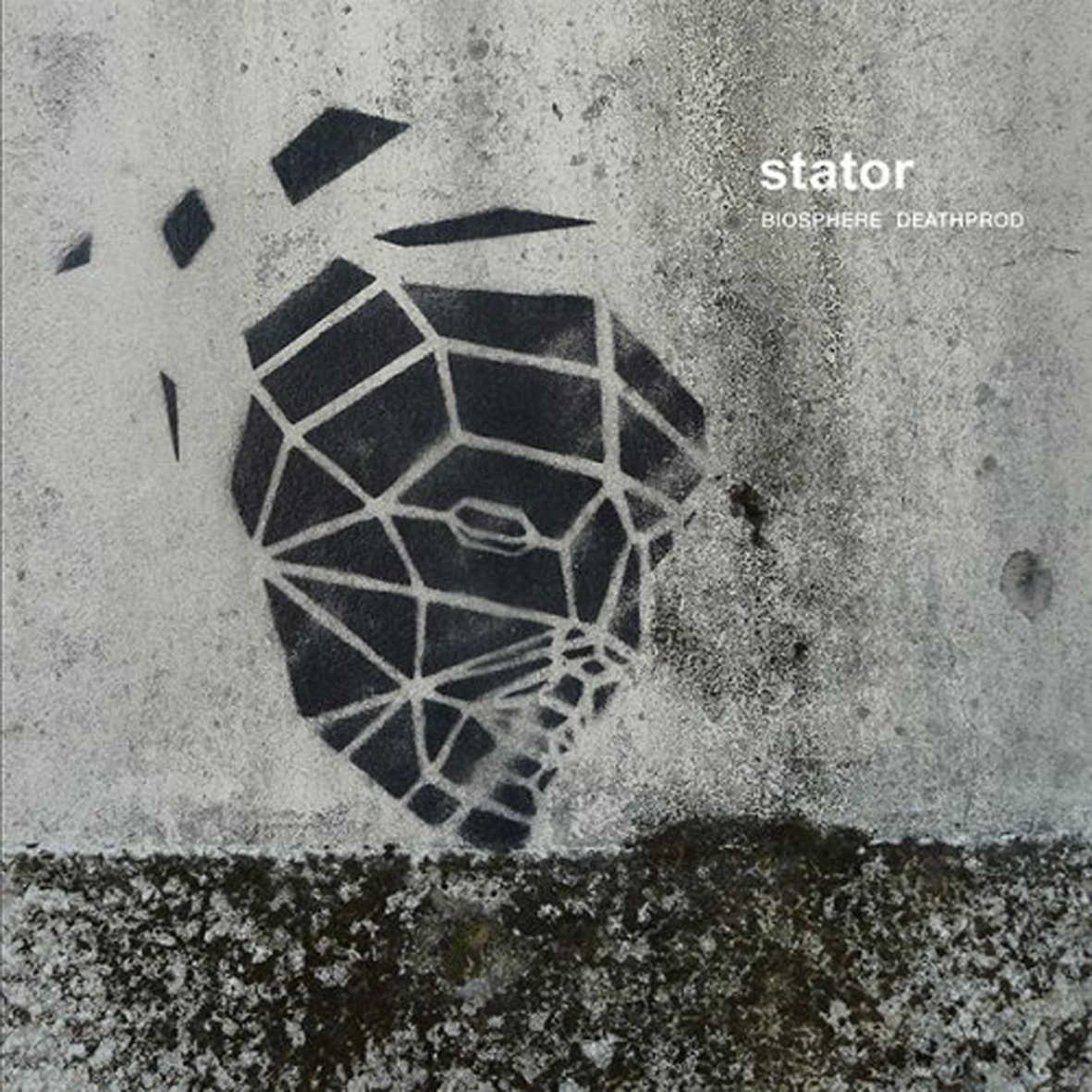 If this album was a true collaboration and had come out a decade ago, I probably would have pre-ordered it months in advance and excitedly camped out in front of my mailbox waiting for it to arrive.  Sadly, it is not (it is a split) and it did not, though Stator is still an admirably solid album.  Also, any fresh dispatch from Helge Sten's Deathprod project is always welcome.  That said, Geir Jenssen is the one who unexpectedly steals the show on this album, offering up some atypically dark and heavy fare to meet Sten's bleakness halfway.  Deathprod, of course, remains as characteristically blackened as ever.
If this album was a true collaboration and had come out a decade ago, I probably would have pre-ordered it months in advance and excitedly camped out in front of my mailbox waiting for it to arrive.  Sadly, it is not (it is a split) and it did not, though Stator is still an admirably solid album.  Also, any fresh dispatch from Helge Sten's Deathprod project is always welcome.  That said, Geir Jenssen is the one who unexpectedly steals the show on this album, offering up some atypically dark and heavy fare to meet Sten's bleakness halfway.  Deathprod, of course, remains as characteristically blackened as ever.
Notably, this is not the first time that these two have paired for a split album, as Biosphere and Deathprod previously joined forces to pay tribute to Norwegian composer Arne Nordheim on 1998's Nordheim Transformed. Stator might have some larger purpose as well, as it is a commissioned work seemingly based upon the varying meanings of "stator," which generally describes the stationary parts of a rotating assembly, but originates from the Latin word meaning "one who stands by."  While that theme is not particularly evident in the finished music without some serious mental gymnastics, it may have either shaped the process or manifested itself in too abstract a way for my feeble mind to comprehend.  I suspect I will probably never know for sure.
The first time I listened to Stator, I did so blindly and was unaware that it was a split rather than a collaboration.  Then I listened to it somewhat blindly again, knowing that it was not a collaboration, but not knowing which artist was responsible for which pieces.  I found it unexpectedly difficult to tell who was who: Jenssen and Sten did a remarkable job finding a middle ground between their somewhat disparate aesthetics and holding a sustained mood of enigmatic ominousness (Geir did most of the heavy lifting, of course, as it is impossible to imagine Deathprod edging towards warmer, more melodic territory).  Stator is a very well-sequenced and thematically/stylistically coherent whole. That said, once I finally confirmed who was responsible for each piece, the differences between the two artists came very sharply into focus–anything that has anything resembling melody or structure was the work of Biosphere, while Sten's contributions are mostly murky, amorphous voids of blackness.  That should surprise no one.
It is equally unsurprising then that most of Stator’s most memorable moments belong to Biosphere.  One of the album's finest moments, for example, is "Space is Fizzy," which is built upon a throbbing pulse that twists into an oscillating negative image of itself at regular intervals.  Even better still is the warm drone of "Baud," which is the most distinctively "Biosphere" piece on the album, but escapes being business-as-usual by augmenting its dreamy thrum with stuttering and sputtering synth textures.  Also of note is the evocative opener "Muses-C," which initially feels like a looping, blurred, and flickering reel of a fighter plane firing its afterburners.
Although he seems mostly content to contribute brief brooding interludes between the more substantial Biosphere pieces, Helge does admirably rise to the occasion in two instances.  The first is "Shimmer/Flicker," a roaring and grinding nightmare of piece that lamentably dissolves into something resembling large, rippling drips in a cavernous subterranean lake after just two minutes.  That second part is certainly likable in its own right, but it is unavoidably anti-climactic after such a crushing opening.  Later, however, Deathprod finally gets everything exactly right: the album-closing 10-minute "Optical" resembles nothing less than a visceral, slow-motion avalanche.  Like most of the Deathprod pieces on the album, "Optical" demands to be listened to loudly on headphones–Sten does not deal in immediately gratifying things like hooks or rhythms; he weaves nuanced, complexly layered hellscapes.
It would not be fair to call Stator a flawed album because it is legitimately excellent, but there are a number of exasperating little things preventing it from being even better than it is.  For example, Geir Jenssen has no shortage of great ideas, but tends to blunt them somewhat by coming across as too conspicuously composed–his well-earned illusions of otherworldliness are dispelled by very earthbound nods to modern composition and his techno past.  Sten, on the other hand, always manages to keep his work organic, complex, dynamic, and distinctively his own, yet rarely finds an inspired core motif upon which to apply his prodigious talents.  That said, each artist does manage to transcend those limitations at least once on Stator: Biosphere's "Baud" and Deathprod’s "Optical" both easily rank among each artist's finest work.  It is hard to complain that an album only boasts two sustained flashes of brilliance, but the pessimist in me cannot help but see a stunning version of Stator that might have been.  Alas.  High expectations are a killer. That said, Stator is still one of the better albums to come out this year.  It is a relief to know that Sten and Jenssen are still just as capable of greatness as ever, even if it is intermittent.
 
Read More
- Administrator
- Albums and Singles
NO FANS COMPENDIUM is a deluxe limited edition 7 CD set of Richard Youngs’ recordings for his long-running private NO FANS label. 5 CDs are Richard’s personal selection from his NO FANS releases, all of which were issued in tiny editions (20 – 18) and only available for sale at Richard’s rare shows or at Glasgow’s now defunct Volcanic Tongue shop. In addition, Richard has included two full discs of material previously unavailable in any form - a recording from 1989 pre-dating his earliest widely-known work, and a new recording from late 2014. Unbeatable as a survey of Richard’s career, everything here is of equal quality to his over-the-counter releases. In keeping with his penchant for unpredictable stylistic mashups and reinventions, there are folky laments, achingly beautiful “songs,” tape collage, rude prog noise, minimalist experiments, multi-tracked vocals, etc.
More information can be found here.
Read More
- Administrator
- Albums and Singles
:format(jpeg):mode_rgb()/discogs-images/R-878104-1187115011.jpeg.jpg)
Since the mid-1960s, Jon Gibson has played a key role in the development of American avant-garde music. No other artist has performed in the world premieres of Terry Riley's “In C,” Steve Reich's “Drumming,” and Philip Glass' “Einstein on the Beach,” three major works that changed the course of musical history. While his expertise on woodwind instruments made Gibson a go-to collaborator in Reich's, Glass', and La Monte Young's ensembles, less known are his remarkable contributions as a composer and visual artist.
Visitations, Gibson's first release under his own name, originally appeared on the Chatham Square imprint in 1973. Inspired by the books of Carlos Castaneda, Gibson departs from the structured repetition of his minimalist peers and takes the listener on an aural journey – spanning organic field recordings, ambient flutes and synthesizers, and free-flowing textures. Visitations' two side-long tracks are at once solemn and unsettling, making this an astonishing debut that firmly establishes Gibson as a pioneer in his own right.
This first-time vinyl reissue is recommended for fans of Cluster, Harold Budd and Phill Niblock.
More information can be found here.
Read More
- Administrator
- Albums and Singles

Antigravity is a trio album from legendary trumpeter Jac Berrocal and two fellow travellers in the French avant-garde, David Fenech and Vincent Epplay. A lugubrious mise-en-scène in which ice-cold outlaw jazz meets musique concrète, DIY whimsy and dubwise studio science, all watched over by the lost souls and hungry ghosts of rock ‘n roll.
Born in 1946, Berrocal is the embodiment of saturnine, nicotine-stained Parisian cool, but he is also one of a kind: indeed, “trumpeter” is hardly an adequate epithet for this musician, poet and sometime film actor who came of age in the ‘70s Paris improv scene, where the boundaries between music, art and theatre were porous and begging to be breached. Inspired by bebop, chanson, free jazz, beat poetry, early rock ‘n roll and myriad Eastern influences, and with an iconoclastic, anything-goes approach to instrumentation and technique that would later align him with post-punk sensibilities, Berrocal blazed an eccentric and unstoppable trail across the underground throughout the ‘70s and ‘80s, both solo and as part of the Catalogue group he co-founded.
During this time his uproarious performances routinely wound up jazz and rock audiences alike, but earned the admiration of no small number of wised-up weirdos: Steven Stapleton invited him to perform on two Nurse With Wound albums, and other notable collaborators in his career include Sunny Murray, Lizzy Mercier-Descloux, Lol Coxhill, Yvette Horner and James Chance. In the '90s his protean achievements were celebrated on the Fatal Encounters compilation, but far from slowing down in the autumn of his life, Berrocal has maintained an extraordinary work-rate, keeping studio dates with Pascal Comelade, Telectu and Jaki Liebezeit, among others. In 2014 he released his first solo album proper in 20 years, MDLV.
Now Berrocal has found the perfect foil in David Fenech and Vincent Epplay, two fearlessly inventive improvisers, composers and catalysts who create challenging, acutely modernist yet historically aware settings – wrought out of synthesis, guitars, computer processing, field recordings and unorthodox percussions - for Berrocal’s unmistakeable voice and breathtakingly lyrical horn sound to flourish.
More information can be found here.
Read More
- Administrator
- Albums and Singles
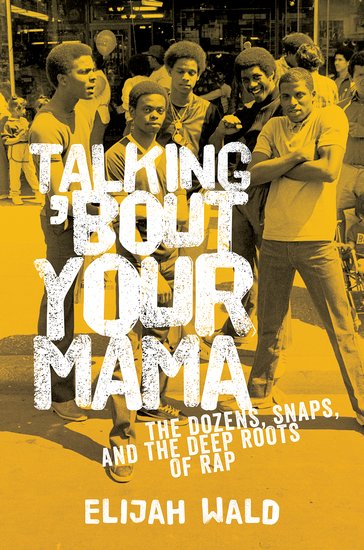
From Two Live Crew's controversial comedy to Ice Cube's gangsta styling and the battle rhymes of a streetcorner cypher, rap has always drawn on deep traditions of African American poetic word-play, In Talking 'Bout Your Mama, author Elijah Wald explores one of the most potent sources of rap: the viciously funny, outrageously inventive insult game known as "the dozens."
So what is the dozens? At its simplest, it's a comic chain of "yo' mama" jokes. At its most complex, it's an intricate form of social interaction that reaches back to African ceremonial rituals. Wald traces the tradition of African American street rhyming and verbal combat that has ruled urban neighborhoods since the early 1900s. Whether considered vernacular poetry, aggressive dueling, a test of street cool, or just a mess of dirty insults, the dozens is a basic building block of African-American culture. A game which could inspire raucous laughter or escalate to violence, it provided a wellspring of rhymes, attitude, and raw humor that has influenced pop musicians from Jelly Roll Morton and Robert Johnson to Tupac Shakur and Jay Z.
Wald goes back to the dozens' roots, looking at mother-insulting and verbal combat from Greenland to the sources of the Niger, and shows its breadth of influence in the seminal writings of Richard Wright, Langston Hughes, and Zora Neale Hurston; the comedy of Richard Pryor and George Carlin; the dark humor of the blues; the hip slang and competitive jamming of jazz; and in its ultimate evolution into the improvisatory battling of rap. From schoolyard games and rural work songs to urban novels and nightclub comedy, and pop hits from ragtime to rap, Wald uses the dozens as a lens to provide new insight into over a century of African American culture.
A groundbreaking work, Talking 'Bout Your Mama is an essential book for anyone interested in African American cultural studies, history and linguistics, and the origins of rap music.
More information can be found here.
Read More
- Administrator
- Albums and Singles

ABOUT THE FILM
During the 60’s and early 70’s as the war in Vietnam threatened its borders, a new music scene emerged in Cambodia that took Western rock and roll and stood it on its head – creating a sound like no other.
Cambodian musicians crafted this sound from the various rock music styles sweeping, America, England and France, adding the unique melodies and hypnotic rhythms of their traditional music. The beautiful singing of their renowned female vocalists became the final touch that made this mix so enticing.
But as Cambodian society - young creative musicians in particular - embraced western culture and flourished under its influence, the rest of the country was rapidly moving to war. On the left, Prince Sihanouk joined forces with the Khmer Rouge and rallied the rural population to take up arms against the government that deposed him. On the right, the Cambodian military, with American military support, waged a war that involved a massive aerial bombing campaign on the countryside. In the end, after winning the civil war, the Khmer Rouge turned their deadly focus to the culture of Cambodia.
After taking over the country on April 17, 1975, the Khmer Rouge began wiping out all traces of modernity and Western influence. Intellectuals, artists and musicians were specifically and systematically targeted and eliminated. Thus began one of the most brutal genocides in history, killing an estimated two million people – a quarter of the Cambodian population.
DON’T THINK I’VE FORGOTTEN: CAMBODIA’S LOST ROCK AND ROLL tracks the twists and turns of Cambodian music as it morphs into rock and roll, blossoms, and is nearly destroyed along with the rest of the country. This documentary film provides a new perspective on a country usually associated with only war and genocide.
The film is a celebration of the incredible music that came from Cambodia and explores how important it is to Cambodian society both past and present.
More information can be found here.
Read More
